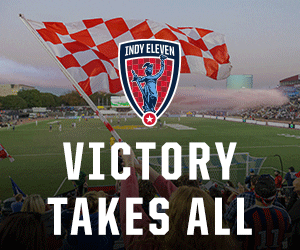Thousands of people walked up and down the crowded streets of downtown during Indiana Black Expo’s Summer Celebration last week.
They had a chance to see the best of what the city has to offer, from fancy restaurants and swanky shops, to state of the art facilities such as Bankers Life Fieldhouse and the Indiana Convention Center.
What may have been overlooked, however, is another side of the city: its homeless population, with scruffy men on street corners asking for money, ladies pushing “borrowed” shopping carts with a few possessions and people with no apparent destination sitting in parks.
“They can be found in other parts of the city, but most of our homeless people are downtown,” said Eric Powell, founder of Feed the Need, an organization that arranges free services for homeless people. “The major facilities for the homeless, such as Wheeler Mission and the Salvation Army, are there. It is also a place where there’s a lot of money, so it provides a good hustle for people who go out to panhandle.”
The problem
Experts say more homeless people are appearing in areas outside of downtown because their numbers are growing.
“The numbers are increasing for certain subpopulations, including families, veterans, women and minorities,” said Christy Shepard, interim director of the Coalition for Homelessness Intervention and Prevention (CHIP). “After 2008 we saw numbers rise in each of those categories.”
Homelessness has become an especially serious problem in the African-American community, with Blacks making up half of the nation’s homeless community, according to a report by the U.S. Conference of Mayors.
According to the National Coalition for the Homeless, African-Americans disproportionately represent 47 percent of homeless people, although they make up only 12 percent of the general population.
Local numbers also show over representation of African Americans among the homeless in Marion County. A recent report by CHIP indicates that African Americans are over 50 percent of those experiencing homelessness here, while being 26 percent of the general population.
“Historically, minority populations, which also include women and children, tend to be the larger makeup of homeless neighbors that we see,” Shepherd explained. “We haven’t seen an overwhelmingly large influx this year, but trends have shown that systematically those are the populations who tend to be very underserved.”
Senior Pastor Beverly Barney, who serves as co-pastor of It Is Well Ministries with her husband Reginald, has noticed an increase in the number of predominantly African-American homeless clients who visit her near Eastside church each Sunday for free meals.
“More people are expressing a need,” Barney said. “However, homelessness is not limited to just men. We’re seeing more couples who come to the church, have breakfast and stay for Sunday school and service. Some of them even come back Wednesday for Bible study.”
The cause
Experts cite many causes for the rise in homelessness among African-Americans. Some point out the stubbornly high unemployment rate for Blacks. Others mention the breakdown of the traditional family unit as a contributing factor of homelessness.
Janet Denise Kelly, a financial expert and an advocate of comprehensive programs to end homelessness in the Black community, noted U.S. Census statistics indicating that only 28 percent of African-American women are married today, compared to 51 percent in 1960. Also, the number of children living in two parent households is down to 20 percent, compared to 67 percent.
“It is a known fact that poverty among African-Americans exceeds 50 percent and that children from single parent households are more likely to have children out of wedlock, thereby perpetuating intergenerational poverty,” Kelly said. “Therefore, the decline of the African-American family is indirectly contributing to homelessness in our community.”
Powell, who himself was once homeless for a year, said some people who are currently homeless may be those released from state mental institutions who could not carve out a normal life for themselves.
Many of the people Powell serves, he added, are homeless due to substance and alcohol abuse problems, which is reflected in CHIP’s 2011 homeless county, which showed that 41 percent of adults counted on the streets or in emergency or temporary housing suffered from a chronic addiction.
“I would have to attribute a lot of homelessness to drugs,” said Powell, who helps provide food, resources and cosmetic upgrades such as haircuts for the homeless. “I met a man who does make a paycheck, but he takes it, gives it to the dope man, then goes to his ‘home’ under a bridge.”
Next week: The Recorder will speak with local homeless individuals and examine possible solutions.






